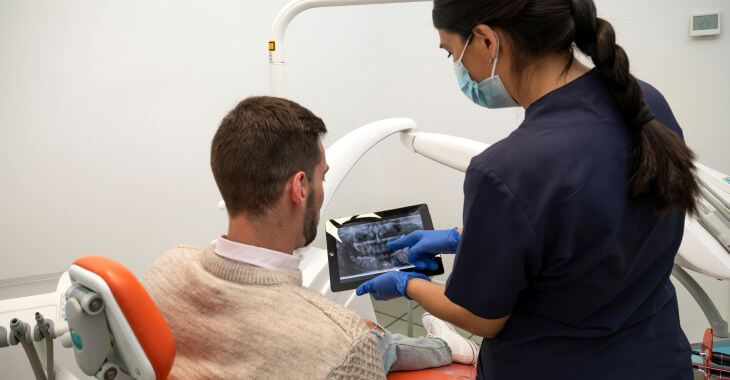Should a Loose Tooth Be Pulled Out in Adults?

Loose teeth are common in children, but in adults, they are usually a sign of something wrong. Whether it’s due to trauma, gum disease, or bone loss, an adult tooth coming loose shouldn’t be ignored. But does a loose tooth have to be pulled? Not always. Here’s what you need to know.
What Causes a Loose Tooth in Adults?
There are several reasons an adult tooth may loosen. The most common cause is periodontal disease, which affects nearly 47% of adults over 30, according to the CDC. Other causes include injury, teeth grinding (bruxism), or osteoporosis, which can weaken the jawbone.
Should You Pull a Loose Tooth Yourself?
Absolutely not. Pulling a loose tooth on your own can cause more harm than good. It may lead to infection, excessive bleeding, or damage to the surrounding bone. Adult teeth are not meant to come out easily. Always let a dental professional handle the situation.
Can a Dentist Fix a Loose Tooth?
Can a dentist fix a loose tooth? This is a very common question, and the answer is often yes, depending on the cause and severity. Dentists have several options, including splinting, bone grafts, and periodontal treatments to stabilize the tooth and save it.
When a Loose Tooth May Be Saved
If the tooth is slightly loose due to injury or mild gum inflammation, it may tighten on its own or be treated. Splinting, where the tooth is bonded to nearby teeth, allows it to heal in place. Early treatment improves the odds of saving the tooth dramatically.
When Does a Loose Tooth Have to Be Pulled?
So, does a loose tooth have to be pulled? It depends. If the surrounding bone is severely damaged, the tooth is infected, or it’s at risk of falling out on its own, extraction may be the best option. This is done to prevent further complications or damage.
Signs That a Loose Tooth Needs Removal
Persistent pain, swelling, signs of infection, or teeth shifting around the loose tooth are red flags. In these cases, removing the tooth may protect the health of your gums, bone, and other teeth. Your dentist will evaluate the risk and explain your options.
What Happens If a Loose Tooth Isn’t Treated?
Leaving a loose tooth untreated can lead to more serious issues, such as bone loss, misaligned teeth, infection, and even loss of adjacent teeth. Early intervention is critical. If you feel movement in a permanent tooth, do not wait—schedule a dental visit.
Treatment Options for Loose Adult Teeth
If the tooth can be saved, your dentist may use:
- Dental splints to stabilize movement
- Deep cleaning or scaling to remove infection
- Bone grafting for structural support
- Nightguards to prevent grinding
Each treatment plan is tailored to the root cause of the looseness and the best options for the patient.
Tooth Replacement After Extraction
If the loose tooth must be removed, you have options for replacement. These include:
- Dental implants for permanent results
- Bridges for restoring function
- Partial dentures for affordability
Tooth loss doesn’t have to affect your confidence or long-term oral health. There are many options to maintain a complete smile, even after a loose tooth is removed.
According to the American College of Prosthodontists, 178 million Americans are missing at least one tooth, and 40 million are missing all teeth. Many cases began with a loose tooth that went untreated. Early dental care can help prevent tooth loss.
Is It Painful to Have a Loose Tooth Pulled?
With today’s modern dentistry, extractions are typically quick and painless. Local anesthesia ensures you feel no pain during the procedure, and most people return to normal routines within a day or two. Recovery depends on the location of the tooth and the reason for its removal.
Can Gum Disease Be Reversed?
In early stages, yes. Gingivitis can often be reversed with professional cleaning and better home care. However, advanced gum disease (periodontitis) causes irreversible damage. That’s why early detection is crucial—especially if you notice a loose tooth.
Preventive oral care is the best option. Brush twice a day, floss daily, avoid tobacco, and see your dentist twice a year. These steps reduce your risk of gum disease and bone loss, the two leading causes of tooth looseness in adults. Prevention always costs less than treatment.
Summary: Should a Loose Tooth Be Pulled?
Can a dentist fix a loose tooth? Often, yes—if it is treated early. Does a loose tooth have to be pulled? Only when the damage is too advanced. Either way, it’s not something to ignore. With proper care, many adults keep their natural teeth for life.

Final Advice About Loose Teeth
If you’re experiencing a loose adult tooth, don’t panic—but don’t delay, either. The sooner you see a dental professional, the better the chances of saving the tooth or replacing it with minimal complications. Trust your dentist to guide you to the right solution.
The information provided on this website, including text, graphics, images, and other materials, is intended solely for informational purposes and should not be used as a substitute for professional medical advice, diagnosis, or treatment.




)